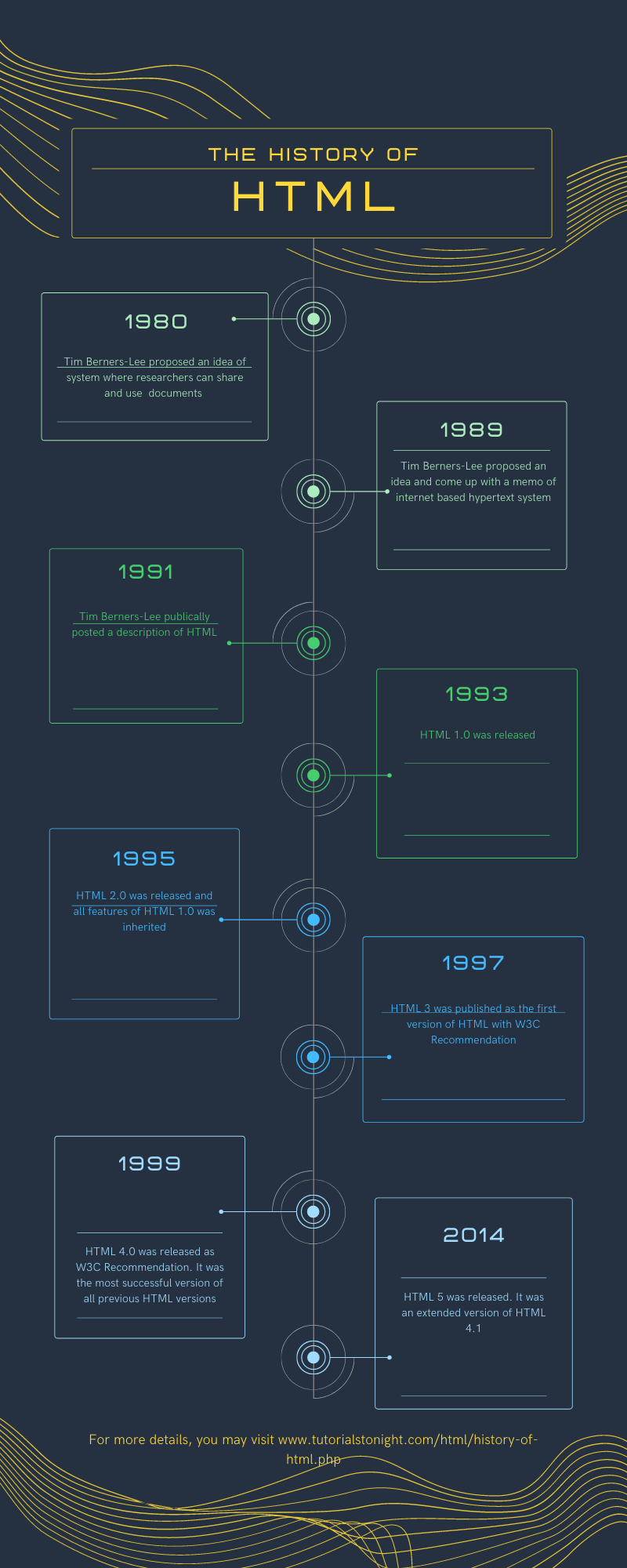A Brief History Of HTML
In this tutorial, you will learn about the history of HTML, how it was created, who created it, how many versions of HTML there are, how it was used in the past, etc.
The most popular markup language among the developers HTML was started at CERN in 1989 with the idea of creating a hypertext system for the internet by Sir Tim Berners-Lee.
HTML was first launched in 1991 with the first version of the language, HTML 1.0, which was released in the same year. The first version of HTML was called HTML 1.0 Strict and was released in 1993.
HTML was then released in 1994 with the second version of the language, HTML 2.0, which was released in 1995. The second version of HTML was called HTML 2.0 Transitional and was released in 1997.

What Is HTML?
The full form of HTML is Hypertext Markup Language. It is a markup language that is used to create web pages. HTML is a subset of the XHTML language, which is used to create XML documents that are valid and well-formed.
You can think of HTML as the skeleton, structure, or layout of a web page. Everything on a webpage is built using components of HTML.
The smallest unit of HTML is called a tag. A tag is a piece of code that tells the browser how to display a certain part of the page. For example, the <h1> tag tells the browser to display the text inside the tag as a heading.
The Story behind HTML
In the year 1980, a physicist named Tim Berners-Lee come up with an idea of a system in which documents could be stored and shared with the researchers at CERN.
The idea was to create a system where researchers could create documents and share them with other researchers. The documents would be stored on a server and the researchers could access them through a web browser.
Then in 1989, he composed an update proposing an Internet-based Hypertext System for global computers. Tim Berners-Lee's idea was a model in which users can navigate from one set of information on a computer to another set of information on another computer.
Note: A hypertext system is a network of text documents connected using a hyperlink and can be jumped from one document to another using some action like a mouse click.
Tim Berners-Lee wrote the browser and server software for HTML in 1990.
Berners-Lee and another data system engineer collaborated in 1990 to request funding but CERN rejected the project.
In late 1991 Tim Berner-Lee publicly posted the description of HTML in a document called HTML Tags.
The first version of HTML had 18 elements which were mostly influenced by SGML (Standard Generalized Markup Language) except for the hyperlink. 11 of those 18 elements exist in HTML4.
The basic characteristics for each element were defined in the browsers and these characteristics can be modified and enhanced using CSS.
Versions of HTML
Let's see the list of different versions of HTML with their timeline and features.
- 1991 - Tim Berners-Lee created HTML 1.0
- 1993:-
- HTML 1.0 was first released in 1993 for developers
- back then not many developers were creating websites so it was evolving slowly during those time
- This version only had basic tags like text, even tables and fonts were not available in this version
- Nov 24, 1995 - This year HTML 2.0 was published. All the features of HTML 1.0 were inherited in HTML 2.0 plus new features were added. Until the release of HTML 3.0, it remains the standard markup language for creating websites.
- Jan 14, 1997:-
- HTML 3.2 was published in 1997 as W3C Recommendation
- It was the first version of HTML which was developed by W3C
- In this version, there was good support for form elements
- One most important thing that was added in this version was the support of CSS
- 1999:-
- HTML 4.01 was published as W3C Recommendation on Dec 14, 1999
- This version was the most successful of all previous HTML released versions
- In this version features like multimedia, scripting, better printing features and more were added.
- After the release of HTML 4.01, no newer version of HTML was released for many years because W3C's HTML working group were busy building the language XHTML
- 2014:-
- HTML5 (the latest version of HTML) was released on Oct 28, 2014 as W3C Recommendation
- It was an extended version of HTML 4.01 published in 2012
- Many new tags were added in this version like <header>, <footer>, <main>, <video>, etc
- HTML5 support mathML and SVG in text

Future of HTML
HTML has covered a long journey from a simple idea of document sharing among different computers to becoming part of almost everything we do on the internet.
HTML has always changed with the world with new demands and technology and will keep changing and adding new features. A most recent update in HTML5 was the addition of canvas which was really awesome, you can use canvas to draw shapes, images, text, animations, and even an entire game upon it.
As the technology has become more complex to fulfill the increasing demand for more reliable devices, the future of HTML lies in adaptability to change, operationality for different devices, and new features for developers and users.
Frequently Asked Questions
-
Where HTML was invented?
HTML was created at CERN by the Physicist Tim Berners-Lee in 1990.
-
Why was HTML created?
HTML was created to share documents between different computers.
-
What is the current version of HTML?
HTML5 is the current version of HTML.
Points to remember:
- HTML was created at CERN by Tim Berners-Lee.
- The idea of HTML was to create an internet-based hypertext system.
- The request of funding request made by Tim Berners-Lee for the hypertext system project was rejected by CERN.
- The first version of HTML had 18 elements.
